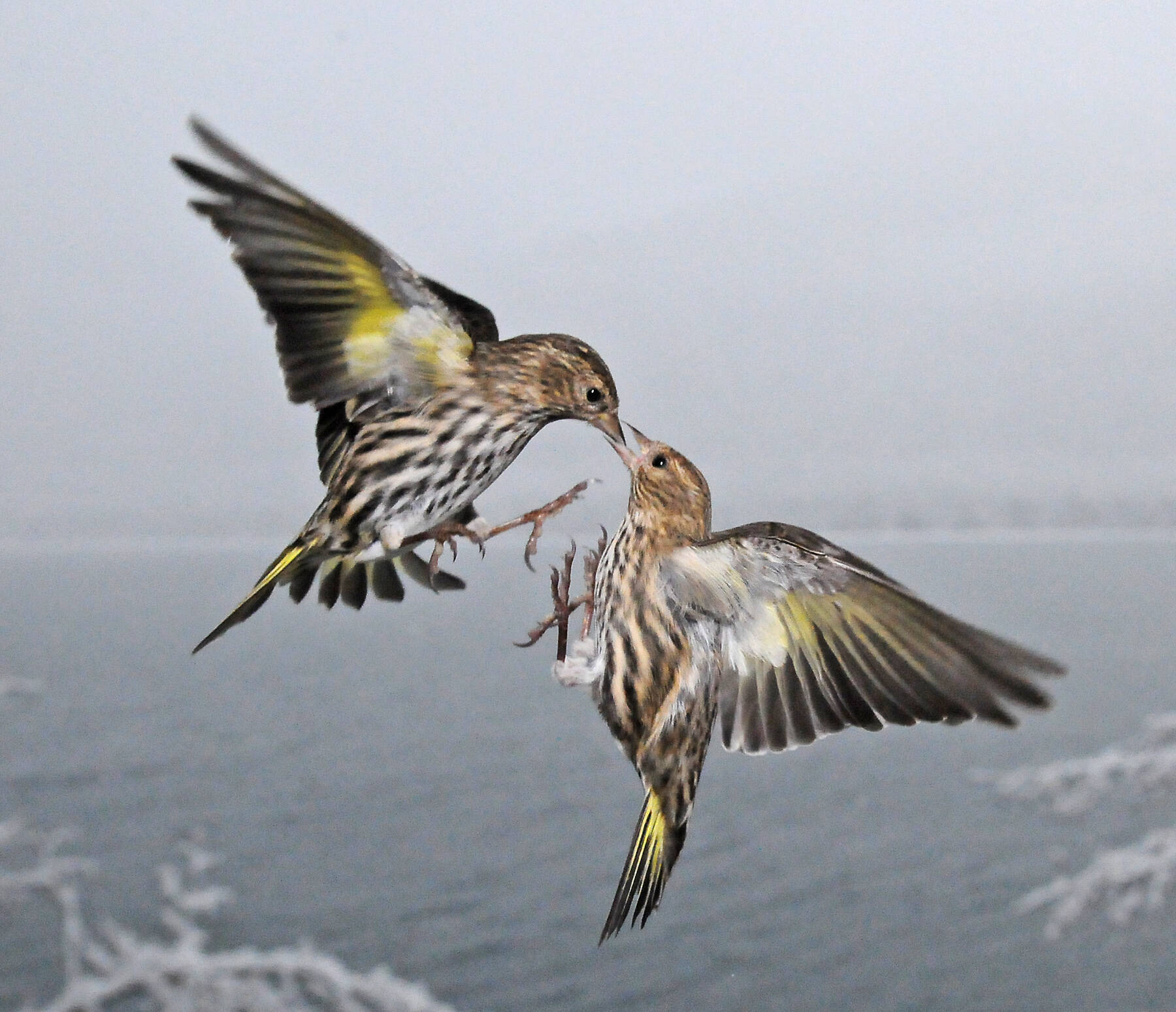By Mary F. Willson
In early February, on a damp and drizzly day, a friend and I went out the Boy Scout Trail to the beach. The lichens were fresh-looking and happy in the humidity, but nothing much seemed to be happening in the bird world. Then, suddenly, a flock of small birds came fluttering in from somewhere and settled in the grasses of the bid meadow. They were redpolls, dozens of them. They fossicked about in the bent-over grasses, searching for seeds and probably anything else that might be edible. I watched one demolish a dark, flat seed-head (probably yarrow) completely, seed by seed. A report from Gustavus noted that redpolls were eating lots of yarrow seeds, sometimes riding the seed stalk to the ground, and lying on their sides on the snow to consume the seeds.
A little later, we perched on a low ridge with the trees as a windbreak and watched another group of redpolls work the grassy berm above the beach, occasionally dropping down to the beach itself. I don’t think of redpolls as beach birds, but on a different day a friendly birdwatcher reported them foraging in the tidal wrack at Auke Rec. They are versatile foragers, often swarming over alder trees, probing the cones and sending down a scattering of fallen seeds onto the snow.
Redpolls eat many kinds of seeds and must snatch up bugs opportunistically. They breed in the far north, but irrupt in large numbers every two years or so, when the seed crops fail up north. Then they appear in more southern regions. Redpolls are well equipped to deal with cold weather: their plumage is heavier in winter, they can store seeds overnight in an esophageal sac, and at times they tunnel under the snow and roost for the night under the white blanket.
They sometimes come to bird feeders too, but they may have to share the bounty. Pine siskins, which sometimes follow a two-year cycle but often irrupt irregularly, eat many kinds of seeds, as well as bugs. A Gustavian friend recently reported huge siskin flocks at a feeder, not much disturbed by the human nearby. When they weren’t busy gobbling up sunflower seeds, they bullied any other birds that came to the feeder, driving them off. Siskins are known to be feisty and aggressive, even challenging larger birds.
Out of curiosity, this friend reached a finger out toward one siskin that was perched on the feeder, driving others away and methodically dragging seeds out. It didn’t leave, even when its tail was touched— it kept grabbing seeds. The friend then stroked its back and touched its feet. But this siskin could not be interrupted in its seed-gobbling. Then it stepped up on my friend’s finger and still kept grabbing seeds. We sometimes call them little piggies…and I have another name for their feistiness that rhymes with their acronym PISI.
Fallen sunflower seeds accumulate below seed-feeders, and the bird feed on them there too. Enter another actor: a red squirrel. My Gustavian friend watched a squirrel dash out to a crowd of siskins busily eating seeds on the snow, scattering the birds in all directions. The siskins came back quickly, only to have the squirrel spook them off again. And again, and again. The squirrel didn’t seem interested in the seeds; it was apparently more interested in mischief!
Siskins and redpolls don’t really look very much alike, seen close-up, although they are similar in size. Siskins show flashes of yellow feathers in wing and tail and have heavy brown streaks on the chest. Redpolls have fewer brown streaks in front, a black chin bib, and the reddish crown that gives them their name; males usually show a wash of reddish on the chest. Despite these differences, and being classified in different genera, redpolls and siskins occasionally hybridize!
• Mary F. Willson is a retired professor of ecology. “On the Trails” appears every Wednesday in the Juneau Empire.

